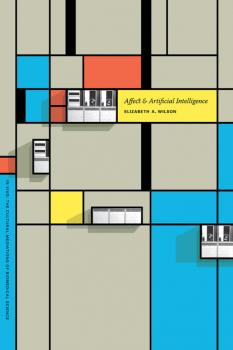ТОП просматриваемых книг сайта:















Журналы
Различные книги в жанре Журналы, доступные для чтения и скачиванияАннотация
I was taken back several times to life between life.What to expect and what it looks like.I have a life time of flashes from past lives.Also had a blog on Shirley Maclaines website called the Univeral Mind and had 70,000 viewers.
Аннотация
A lucid, honest and deeply searching account of the author's struggle to come to terms with anxiety and depression.<br /> <br />Jenny Stewart shows how, over many years, with considerable help from others, she was able gradually to take control of her depression, not by focusing on its causes, but by understanding how best to fight it. It covers practical advice as well as personal revelations.<br /> <br />There are many books about depression – what makes this one different? This is not just a self-help book, it is a self-seeing book. It has been written specifically with women in mind. Inner Weather shows that it is possible to make something positive out of the depressive experience, provided that we have the courage to learn from it. It fills a gap between the many excellent books of professional advice and personal memoirs that relate the depressive experience.<br /> <br />Inner Weather is not only a book for depressives, but for anyone who has an interest in managing their own mind 'from the inside'.
Аннотация
In this collection of original puzzles, games, and codes, the heroic Dr. Ecco, a mathematical detective and puzzle solver, takes on his archenemy, Baskerhound, and uncovers a plot that threatens the world. No sophisticated mathematical background is necessary to solve these challenges, which were inspired by the methods and thinking of researchers in computer science and mathematics. All you need is imagination and a passion for puzzles.A graduate of Yale, author Dennis Shasha received his Ph.D. from Harvard and is Associate Professor of Computer Science at the Courant Institute of Mathematical Sciences at New York University. He includes complete solutions at the end of the book, and has rated the puzzles according to difficulty.
Аннотация
In 1903, a student at a military academy sent some of his verses to a well-known Austrian poet, requesting an assessment of their value. The older artist, Rainer Maria Rilke (1875–1926), replied to the novice in this series of letters — an amazing archive of remarkable insights into the ideas behind Rilke's greatest poetry. The ten letters reproduced here were written during an important stage in Rilke's artistic development, and they contain many of the themes that later appeared in his best works. The poet himself afterwards stated that his letters contained part of his creative genius, making this volume essential reading for scholars, poetry lovers, and anyone with an interest in Rilke, German poetry, or the creative impulse.
Аннотация
The conflict between scientific observation and poetry, reflections on abolition, transcendental philosophy, other concerns are explored in this superb general selection from Thoreau's voluminous Journal. Here are «…the choicest fruits of Thoreau…» — Nation.
Аннотация
For much of the 20th century, an apparently solid conceptual wall allowed us to separate information and bodies. Information is that which exists between elements; bodies are the elements themselves. One is abstract the other corporeal. One is intricately involved in signs and syntax, the other in cells and organs. Yet in the last few decades, it has become increasingly clear that this conceptual wall leaks–bodies and information will not stay separate from one another. Data have become flesh just as flesh has become data. Semiotic Flesh marks an important contribution to the emerging field of information studies, providing multiple perspectives on the implications of burgeoning information technologies and biotechnologies.The essays and responses in this volume focus on the sites where flesh and information productively intermingle, including the strange connections between LSD and DNA research, the implications of computer-assisted surgery, and the role of the human body in virtual reality installations.
Affect and Artificial Intelligence - Elizabeth A. Wilson
In Vivo: The Cultural Mediations of Biomedical ScienceАннотация
In 1950, Alan Turing, the British mathematician, cryptographer, and computer pioneer, looked to the future: now that the conceptual and technical parameters for electronic brains had been established, what kind of intelligence could be built? Should machine intelligence mimic the abstract thinking of a chess player or should it be more like the developing mind of a child? Should an intelligent agent only think, or should it also learn, feel, and grow?Affect and Artificial Intelligence is the first in-depth analysis of affect and intersubjectivity in the computational sciences. Elizabeth Wilson makes use of archival and unpublished material from the early years of AI (1945�70) until the present to show that early researchers were more engaged with questions of emotion than many commentators have assumed. She documents how affectivity was managed in the canonical works of Walter Pitts in the 1940s and Turing in the 1950s, in projects from the 1960s that injected artificial agents into psychotherapeutic encounters, in chess-playing machines from the 1940s to the present, and in the Kismet (sociable robotics) project at MIT in the 1990s.
Информация о книге
Автор произведения Elizabeth A. Wilson
Жанр Журналы
Серия In Vivo: The Cultural Mediations of Biomedical Science
Аннотация
Since World War II, the biological and technological have been fusing and merging in new ways, resulting in the loss of a clear distinction between the two. This entanglement of biology with technology isn't new, but the pervasiveness of that integration is staggering, as is the speed at which the two have been merging in recent decades. As this process permeates more of everyday life, the urgent necessity arises to rethink both biology and technology. Indeed, the human body can no longer be regarded either as a bounded entity or as a naturally given and distinct part of an unquestioned whole.Bits of Life assumes a posthuman definition of the body. It is grounded in questions about today's biocultures, which pertain neither to humanist bodily integrity nor to the anthropological assumption that human bodies are the only ones that matter. Editors Anneke Smelik and Nina Lykke aid in mapping changes and transformations and in striking a middle road between the metaphor and the material. In exploring current reconfigurations of bodies and embodied subjects, the contributors pursue a technophilic, yet critical, path while articulating new and thoroughly appraised ethical standards.
Информация о книге
Автор произведения Группа авторов
Жанр Журналы
Серия In Vivo: The Cultural Mediations of Biomedical Science
Аннотация
Focusing on the period between the 1970s and the present, Life as Surplus is a pointed and important study of the relationship between politics, economics, science, and cultural values in the United States today. Melinda Cooper demonstrates that the history of biotechnology cannot be understood without taking into account the simultaneous rise of neoliberalism as a political force and an economic policy. From the development of recombinant DNA technology in the 1970s to the second Bush administration's policies on stem cell research, Cooper connects the utopian polemic of free-market capitalism with growing internal contradictions of the commercialized life sciences.The biotech revolution relocated economic production at the genetic, microbial, and cellular level. Taking as her point of departure the assumption that life has been drawn into the circuits of value creation, Cooper underscores the relations between scientific, economic, political, and social practices. In penetrating analyses of Reagan-era science policy, the militarization of the life sciences, HIV politics, pharmaceutical imperialism, tissue engineering, stem cell science, and the pro-life movement, the author examines the speculative impulses that have animated the growth of the bioeconomy.At the very core of the new post-industrial economy is the transformation of biological life into surplus value. Life as Surplus offers a clear assessment of both the transformative, therapeutic dimensions of the contemporary life sciences and the violence, obligation, and debt servitude crystallizing around the emerging bioeconomy.
Информация о книге
Автор произведения Melinda E. Cooper
Жанр Журналы
Серия In Vivo: The Cultural Mediations of Biomedical Science
Аннотация
Winner of the Best Book Award in the 2009 Garden Writers Association Media AwardsNamed an «Outstanding Title» in University Press Books for Public and Secondary School Libraries, 2009In this introduction to sustainable landscaping practices, Linda Chalker-Scott addresses the most common myths and misconceptions that plague home gardeners and horticultural professionals. Chalker-Scott offers invaluable advice to gardeners gardeners who have wondered:Are native plants the best choice for sustainable landscaping?Should you avoid disturbing the root ball when planting?Are organic products better or safer than synthetic ones?What is the best way to control weeds-fabric or mulch?Does giving vitamins to plants stimulate growth?Are compost teas effective in controlling diseases?When is the best time to water in hot weather?If you pay more, do you get a higher-quality plant?How can you differentiate good advice from bad advice?The answers may surprise you. In her more than twenty years as a university researcher and educator in the field of plant physiology, Linda Chalker-Scott has discovered a number of so-called truths that originated in traditional agriculture and that have been applied to urban horticulture, in many cases damaging both plant and environmental health. The Informed Gardener is based on basic and applied research from university faculty and landscape professionals, originally published in peer-reviewed journals.After reading this book, you will:Understand your landscape or garden plants as components of a living systemSave time (by not overdoing soil preparation, weeding, pruning, staking, or replacing plants that have died before their time)Save money (by avoiding worthless or harmful garden products, and producing healthier, longer-lived plants)Reduce use of fertilizers and pesticidesAssess marketing claims objectivelyThis book will be of interest to landscape architects, nursery and landscape professionals, urban foresters, arborists, certified professional horticulturists, and home gardeners.For more information go to: http://www.theinformedgardener.com










